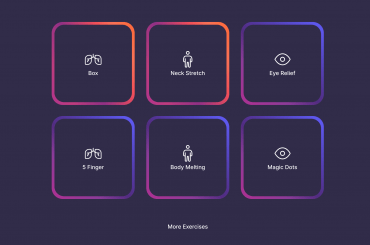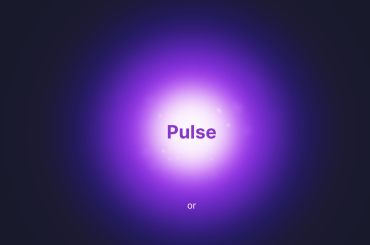Engagement is a concept that really has a hold on us, and it’s not just educators. Social media and game designers obsess about maximizing it. Enterprise software companies espouse the value of it towards team performance. Heck, our banking app tracks our session duration and tries to increase it.
It’s likely accurate to say that the majority of educators have chosen engagement as the goal of their work. Overall, this is a good thing. It has helped move teaching methods beyond compliance and remain relevant. Engaged students are an unequivocally good thing.
But recently we started to ask ourselves some questions about engagement. What does it really mean to be engaged? Both from the teacher’s perspective, and from the students’. Further, does it matter how engagement gets created? Or is all engagement the same? And if every experience you have across society is also aiming to maximize engagement, is it the right thing for educators to be doing? Or should educators be taking a left hand turn…
We dug into the education literature on the topic. There are countless informative and thoughtful sources. What was most interesting to us was what our research didn’t reveal – a clear definition. Frankly, the more we dug, the more confused we got. There is a huge range of definitions. And not all of them agree. Here’s just a sampling. Engagement is paying attention. It is purposeful learning. It’s curiosity. It’s interaction (or action). It’s immersion in a task. It’s flow. It’s exhibiting a passion for learning. It’s excitement. It’s just compliance but with another name. There are scaffolds trying to integrate and make sense of all the disparate definitions.
How does a teacher even know what engagement is and how to create it with this lack of definitional clarity?
As we stated in our first post, our goal is to figure out how to set the conditions for optimal learning experience, or flow, in education. We know this has the greatest potential for both academic performance and enjoyment of experience for students. Our research into engagement was fueled by trying to understand how we can leverage the concept better towards this goal. But if we’ve learned anything about flow so far, the details matter in how you approach it. Deplete dopamine too much or avoid the struggle of balancing brain chemistry, and you simply never get there.
The more we thought about it, the lack of clarity around engagement started to feel more like a hurdle than a concept for educators to leverage.
One early realization that we had was that engagement is an exhibited trait or behavior. This stands in contrast with flow, which speaks to inner experience. This introduces the potential for at least some disconnect.
For example, do you look engaged when you are in flow? This must be true sometimes, but is it always true? And do the actions that set the conditions for flow look like engagement, too? Or do they look different? How do you know the difference between the two? And worse, what if what looks like engagement actually represents an internal state that interferes with flow (ie, overstimulation)?
Our sense is that to strive for optimal, we need to work with terms that have more precise definitions, clearer look-fors, and less potential dualities.
In our last post, we attempted to build a scaffold to help us seek this clarity. We already have some tweaks and improvements in mind based on the feedback we got that we’ll publish soon.
In the meantime, we’ll turn our attention to the term focus.
If you are interested in something, you will focus on it, and if you focus attention on anything, it is likely that you will become interested in it.
Mihaly Csikszentmihalyi, author of Flow, The Psychology of Optimal Experience
Focus is a term that we all know, or at least think we know. And it’s surely something that almost anyone would agree is essential to learning if you asked. But as we found in our last Twitter chat, it is not a hot topic with many educators (likely due to the emphasis of engagement).
Focus is often equated with the words attention and concentration. In scientific circles, attention is the most clearly defined of this group. The neuroscientific definition of attention is a cognitive process of selectively concentrating on one thing while ignoring other things. Attention comes from a rather complicated interaction between several brain networks (the default mode and task-directed networks). Interestingly, ADHD and other attentional conditions are differences in how these two brain networks interact.
The definition of focus is more varied, and less scientific. It is often described as the center of attention. But for educators, this definition isn’t as enabling as it could be. A more useful definition is to think of it as the control of attention.
Why is control of attention a useful definition to educators? Most scientific findings support the idea that attention isn’t fixed. It varies. It varies between individuals and contexts. And importantly, it can change. You can improve it. Even those with ADHD can show progress with time, behavioral changes and yes, medication. It is both accurate and useful to think of it as a skill. Control of attention is a definition that captures this important fact.
This means that not only is focus practically helpful towards things like managing classrooms, it is also a skill that you are developing through the learning experiences you create.
So what is the relationship between focus and flow? Flow can be defined succinctly as ordered consciousness. This is in contrast to normal consciousness which is usually disordered (distracted, out of our control, etc). So it follows somewhat logically that control of attention is the very foundation. Some definitions for flow even use the words intense focus. But the two shouldn’t be directly conflated. Focus itself is not flow. Focus requires effort to get started. There is no loss of self, as there is with flow. Finding focus can provoke all sorts of reactions, often negative. Frankly, it’s a struggle. Flow is none of those things. Flow is what happens when your neurochemistry finds balance while struggling to focus and starts to feed further action more naturally.
It is worth stating that you will never experience flow if you cannot control your attention.
It is also worth noting that focus is a useful skill beyond the purposes of finding flow. Most of the predictions about the future of jobs, and the skills educators should be aiming for in response, are misguided at this point. We can say this with confidence, because frankly, we have a horrible track record as a society of seeing the capabilities of technology in advance.
But there is one aspect we are 100% confident in, and it is this: there will be more, and more sophisticated, experiences to control your attention with each passing year. It’s already a huge problem, as we all know. And it’s only going to get worse. Controlling your attention is just about the only ‘skill of the future’ we’d bet our life savings on.
Control means you can direct, or redirect your attention at will. You can stop doing one thing, and start doing another. You are aware of where your attention is and where it isn’t. It is often a struggle, but in this case, visible struggle might be a positive sign. A sign that the skill of focus is being worked on.
A lack of control, then, is distractibility. It is the inability to switch from one task to another. It is a lack of awareness of what you are doing. It could be a lack of struggle, or even just over-excitability.
If you were to try to observe whether a student is focused, or not, these would be some of the things you would look for.
While we recognize, again, that some definitions of engagement might match up – it’s really the ones that don’t that have us most concerned. They incent teachers to skip over the development of the skill of focus in the interest of more obvious interaction. And to us, this is a short term gain for the long term loss of the potential for flow, as well as interfering with the development of an essential skill.
Perhaps moving away from engagement is the left hand turn educators should consider.



